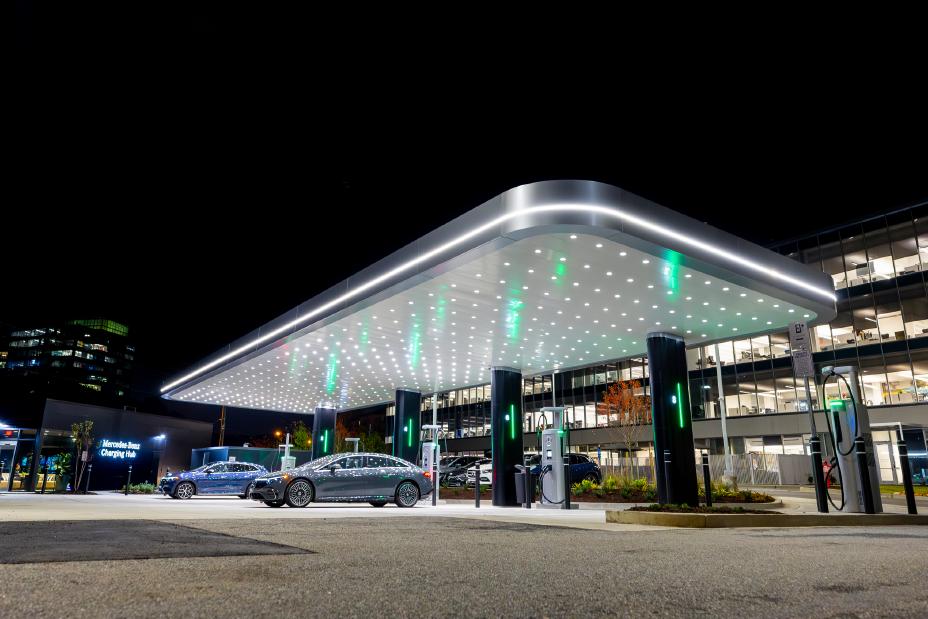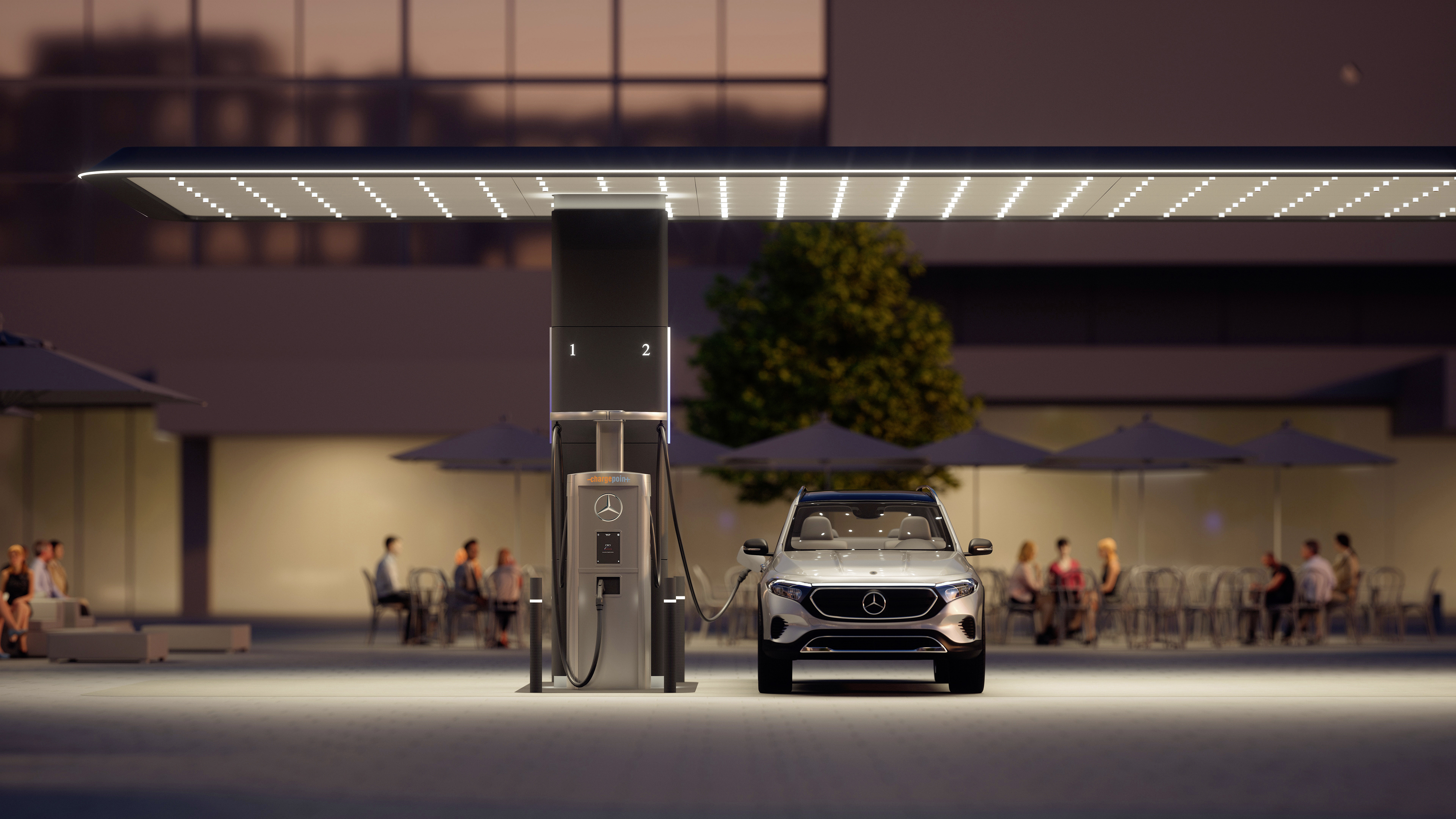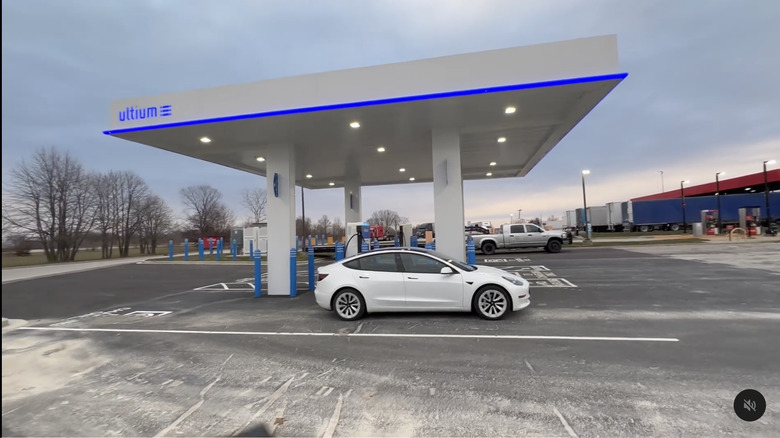GM's Ultium EV Charging Station Looks Like A Gas Station - And That's Fine
There's something I've always found a bit odd about Tesla's Supercharging stations — most of them don't have a roof. So, what are you supposed to do if you pull up in need of a charge and there's a torrential downpour going on? I guess you're out of luck. Have fun rushing out to get drenched while you're trying to get the charger in.
While some other automakers are adding roofs to their charging stations, there seems to be a split on how that is being implemented. While Mercedes is doing a really nice job of this and opting for a pretty sweet-looking design (look at that luxury roof below), other companies have decided to keep it simple and adopt a design language we have all gotten quite used to over the last 50+ years.

As reported by Mike the Car Geek on Threads, General Motors has launched one of its new Ultium EV charging stations in Ohio. Mike took a drive out to the charging station to check it out and, well, it looks exactly like a gas station. Honestly. Looking at it, you would never know this was a charging station for electric vehicles unless you pulled up to a stall (something I have to imagine people have done already).
According to Mike, the charging station supports charging speeds of up to 350kW, features a "HUGE" window squeegee (that's for you, Cybertruck owners), and is within walking distance to a Denny's. Priorities, people. Most importantly, it has a canopy to protect you from the rain!
Unfortunately, it appears that the charging station hasn't made the switch to Tesla's NACS (North American Charging Standard) connectors just yet and still rocks the good old CCS connectors. That'll likely change, especially since GM has already committed to switching to NACS in 2025 and EVgo, who is partnered with GM on these stations, has already started to roll out NACS to its own charging stations.
There are certainly going to be some more attractive charging stations from other companies. Mercedes says that it plans to open "thousands" of charging points across the United States by 2030 through standalone chargers as well as partnerships with Simon Malls starting next year and Buc-ee's travel centers in Texas, Florida, Alabama, and Georgia by the end of this year. The company says that it will build out 400 charging hubs — a grand total of 2,500 chargers — by the end of the decade.
You don't need to take a closer look to notice that these charging stations are a little more pleasing to look at than GM's charging station:

While this particular charging station from General Motors certainly won't win any design awards like the one that Mercedes has cooked up, I don't think it needs to. The point is to have a reliable and fast charge with a roof over your head when you need to get out of the car to hook up the charging cable. This station accomplishes that.
I honestly won't be surprised if the future of the EV charging network ends up being mostly gas stations that have been retrofitted to switch over to charge electric vehicles over gas vehicles. The network and most of the infrastructure are already there — the switch just needs to happen as it starts to make sense. GM's just ahead of the curve here.
